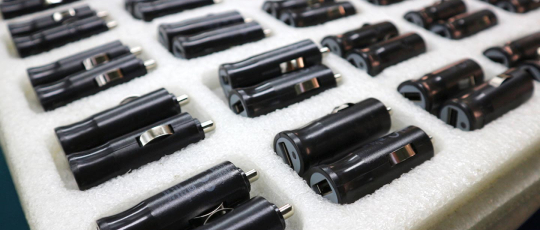
Though many people often confuse the two terms and use them interchangeably, they certainly do not mean the same thing. OEMs build products based on designs provided to them from customers, while ODM manufacturers design some or all of the product themselves before manufacturing them for customers. This article will help explain the differences and benefits between the two types of manufacturers.
Original Equipment Manufacturer
An OEM (Original Equipment Manufacturer) builds a customer’s product that is fully designed by that customer and then contracted out to produce. The Apple iPhone, for example, was invented and designed by Apple, and then contracted to Foxconn to build. With this, the iPhone has a much higher level of product differentiation because the design is only available to Apple and its contracted manufacturer.
The main advantage of an OEM is that the customer retains total creative control over the design. When using an OEM, there will also be little to no intellectual property restrictions that may prevent switching to a different manufacturer in the future, if needed.
Another benefit of using an OEM vs ODM is the flexibility in the product design. OEMs can build products to any specification while ODM products are restricted to a predetermined design.
The disadvantage of OEM manufacturing is the high level of resources required to produce a unique product. These resources include the research and development costs along with the time needed to create the design before it is ready to be manufactured. These investments are often quite high and bring a certain amount of risk to a company.
Referring back to Apple, they invest millions of dollars into research and development over several years in order to create their unique products. Apple has a market share that ensures they will see the return on this investment, however many companies do not have this guarantee.
Original Design Manufacturing
ODM (Original Design Manufacturer) is also referred to as private labeling or white label products. In this case, the manufacturer has an existing product design and the customer may make slight changes to sell it under their own brand name. Some examples of changes include branding, colors, or packaging.
An example of an ODM product is car chargers. If you browse for car chargers on Amazon you will see multiple companies with essentially the same design. While the products are manufactured according to the same general design, each is custom branded, colored and packaged according to each buyer’s specifications.
ODM doesn’t refer to just electronics either. Have you ever noticed how furniture, clothing, or sports equipment often carry similar looking products? This is another example of ODM manufacturing.
The advantage of ODM manufacturing is the low amount of resources that the customer needs to create a product. With ODM, the customer does not need to invest millions of dollars, or time, into research and development in order to develop a new product. By reducing the expense of product development, the customer can focus more time and money on marketing strategies.
Another benefit to using an ODM manufacturer is the availability of the economies of scale. This means that the product's unit cost is lower since the manufacturer is building the same design at large volumes.
The disadvantage of ODM is it can be difficult to stand out from competitors that are essentially offering the same design at a similar price point. This amount of price competition often means lower profit margins.
For example, an end user looking to purchase an ODM car charger is more likely to choose the lowest price instead of caring about the color or brand. It requires a great amount of creativity from the customer to really differentiate their ODM product from competitors in the market.
Key Takeaway
When deciding to use an OEM vs an ODM, it really comes down to available resources. If a company has a research and development budget, along with a reasonable time-to-market plan, then using an OEM is a good fit. If time and resources are scarce, then ODM is the route to go to launch a product.


